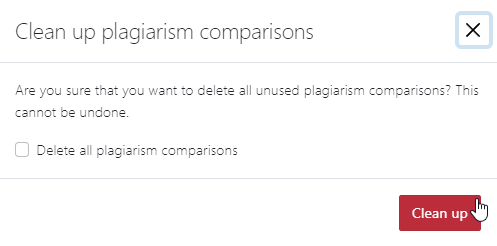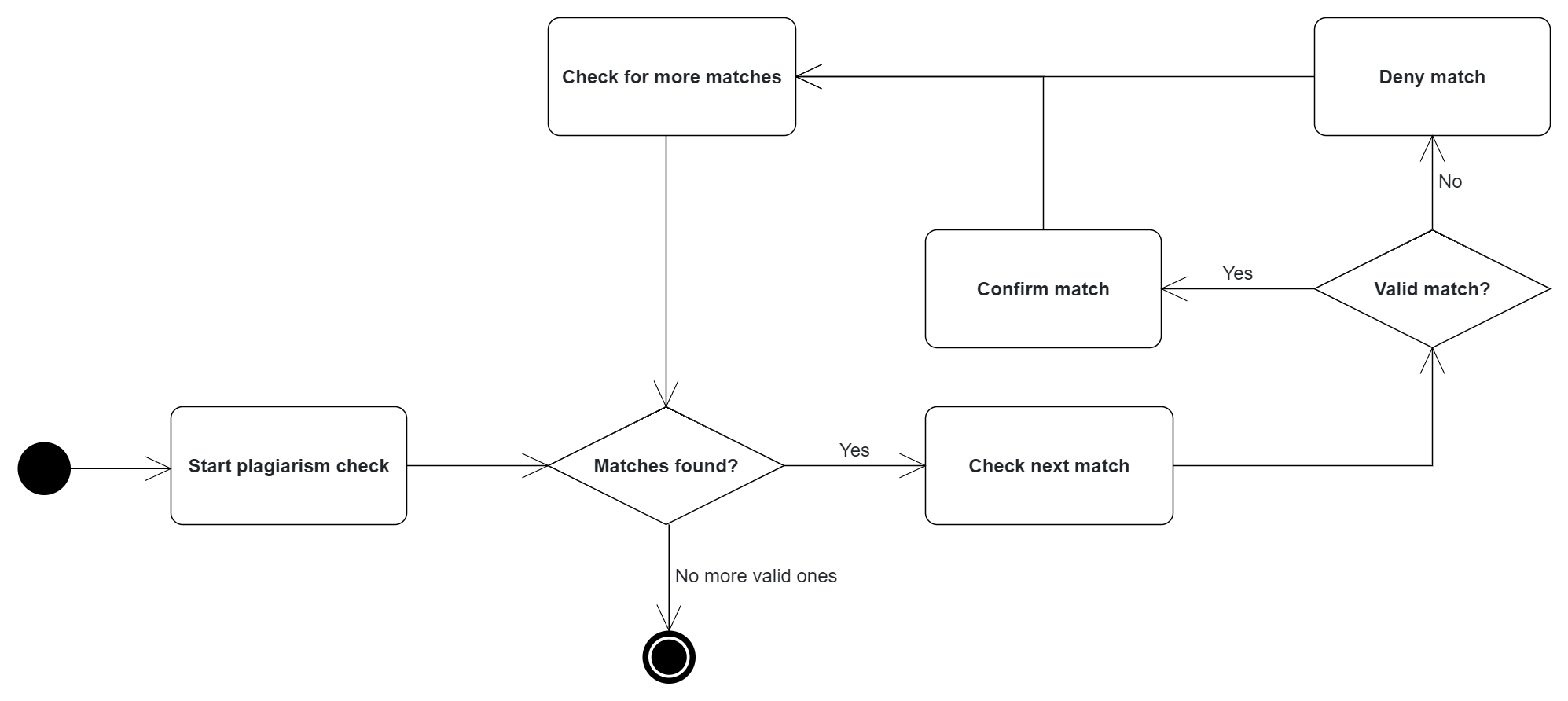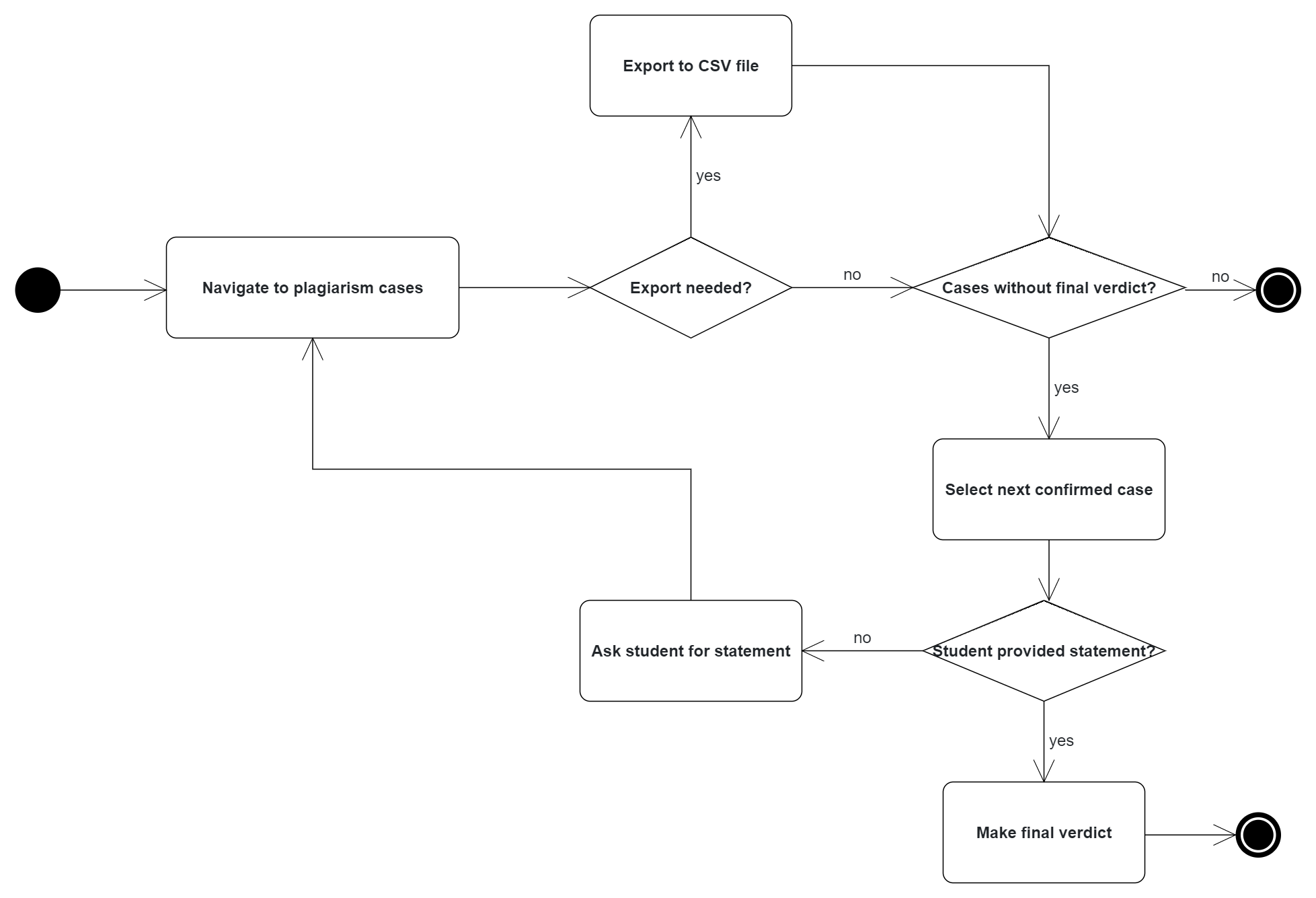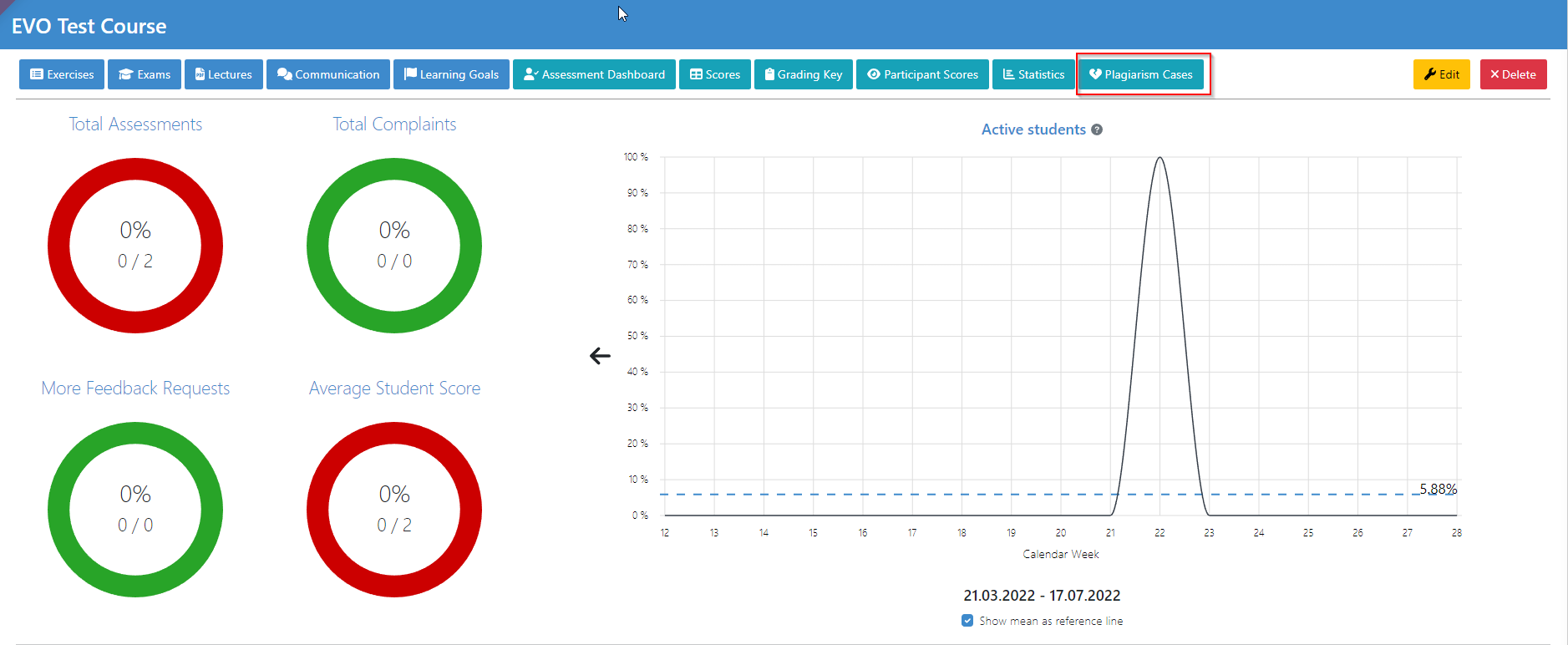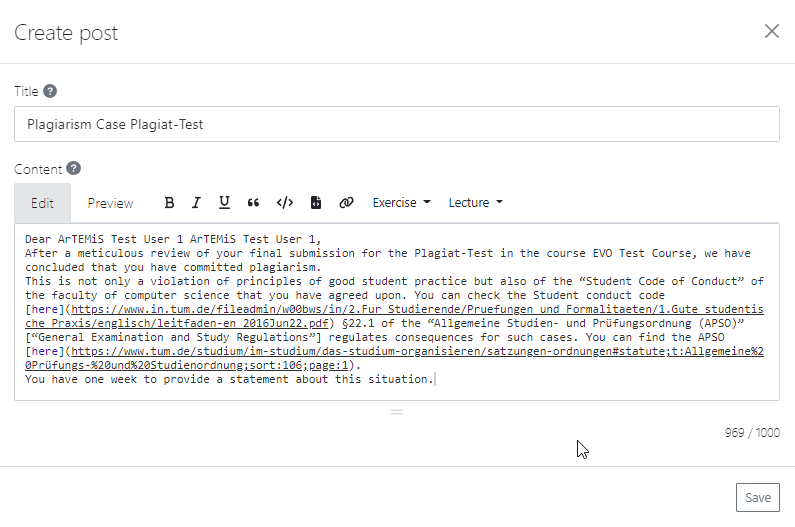Plagiarism checks
Content of this document
Introduction
Artemis allows tutors and exercise instructors to check assignment submissions from students for plagiarism. With this feature, different types of assignments can be checked in Artemis, including programming assignments, modeling assignments, and text assignments. Plagiarism checks are available for both course and exam exercises. To perform the plagiarism check, the responsible tutors must initiate the checking process for a specific exercise. First, we give an overview of different available features of the plagiarism check. Next, we explain the plagiarism check workflows from the perspective of various Artemis users, using UML Activity Diagrams to visualize the process.
Plagiarism Check Overview
In this section we give an overview of available features of plagiarism check. We explain different configuration settings, possible user actions and present the plagiarism result views, which are accessible after plagiarism checks run.
Settings
Before starting the plagiarism check, the user can configure different settings to get the best possible results.
Similarity Threshold in % (minimum value 0, maximum value 100).
Ignore comparisons whose similarity is below this threshold. A similarity of 0% means that there is no overlap between two submissions, a similarity of 50% means that about half of two submissions are identical. A similarity of 100% means that two submissions are completely identical.
Minimum Score in % (minimum value 0, maximum value 100).
Consider only submissions with a score greater than or equal to this value.
Minimum Size.
Default value: Consider only submissions whose size is greater or equal to this value.
Modeling exercises: Consider only submissions that have at least as many modeling elements as the specified value.
Text exercises: Consider only submissions that have at least as many words as the specified value.
Actions
The user can use different actions to run a plagiarism check, inspect the results or improve the performance.
Note
Plagiarism detection can take a long time for large courses and exams.
Detect plagiarism: The user can execute the plagiarism check using this action.
Rerun plagiarism detection: The user can rerun the plagiarism check by executing this action. It can be helpful to check for plagiarism using the different settings as described in section Settings.
Clean up: The user can clean up the latest plagiarism check results for the selected exercise. It helps to keep the database slim and safe storage capacity. Moreover, it should improve the overall system performance. To execute the clean-up action, the user must approve it by clicking ok on the dialog, as this action deletes all potentially approved or denied plagiarism cases.
Download: The user can download the plagiarism results in JSON or CSV format to open them in a selected editor for the further analysis.
Results
After the plagiarism check was executed, the results can be inspected in different views.
Overview of the similarity distribution. This statistical overview shows the similarity distribution based on the percentage as a histogram chart. The user can analyze the distribution quickly and adjust the plagiarism check settings as needed accordingly.
Selected submission. When the user selects the submission from the submission list on the left side of the plagiarism run result view, new actions can be selected to initiate the plagiarism check workflow. We will provide further details to the workflow in the next section.
Plagiarism Check Workflow
In this section, we explain the process of the plagiarism case detection process from different users’ perspective.
Tutors
Tutors and instructors can execute plagiarism checks. They carefully review the automatically identified cases and provide a first decision whether to accept or deny the found case. We visualized the process in the following diagram.
Open the Exercise via:
For course exercises: Course Management → Course → Exercises → Your Exercise.
For exam exercises: Course Management → Course → Exams → Exam → Exercise Groups → Your Exercise.
Access the plagiarism tool as seen in the picture
Run the Plagiarism Check.
Tutors and instructors can adjust the similarity threshold and other settings as described in section Settings if deemed necessary (most of the time not, depends on the formulation of the exercise and on the number of possible solution. A similarity of less than 50% typically means that students did not plagiarize).
Checking exercises with many students can take some time (sometimes multiple minutes) and might be resource intensive → We recommend to run plagiarism checks at times when only a few users actively use Artemis in such cases
Start checking for plagiarism.
Review if the presented matches are actual plagiarism cases or not.
Depending on your decision, either deny or confirm the match as plagiarism.
Continue until the matches start to get “too different”.
Instructors
The instructors can execute the same actions as tutors, additionally they are able to make a final decision on the particular confirmed plagiarism case. We visualized the process in the following diagram.
Open the plagiarism cases via:
Overview the current status of all confirmed plagiarism cases by inspecting the management overview. The overview provides the following information about each confirmed case:
Export the confirmed cases as CSV file to analyze them in another editor.
Select one confirmed case and navigate to the case detail view.
Notify the student about the potential plagiarism case and ask him or her for a statement.
Make a final verdict by selecting one of 3 available options. The final verdict must be approved by clicking ‘Confirm’ in the dialog.
No plagiarism. The instructor can deem the accusation invalid and resolve the plagiarism case.
Warning. The instructor can write a warning message to the student and confirm the verdict in the dialog.
Point deduction in % (minimum value 0, maximum 100). Deduct exercise points and confirm the verdict in the dialog.
Plagiarism. If a grading key exists, the student receives the plagiarism special grade for the exam or course that the corresponding exercise belongs to. The next steps must be made manually by contacting responsible persons in the university to mark the student’s grade as “Unterschleif”.
Students
After the student got a notification that the instructor asked for the statement, he or she has one week to respond. The process is visualized in the following diagram.
Open the notified plagiarism confirmed case via:
Reply to the message of the instructor.
Wait for the final verdict.


